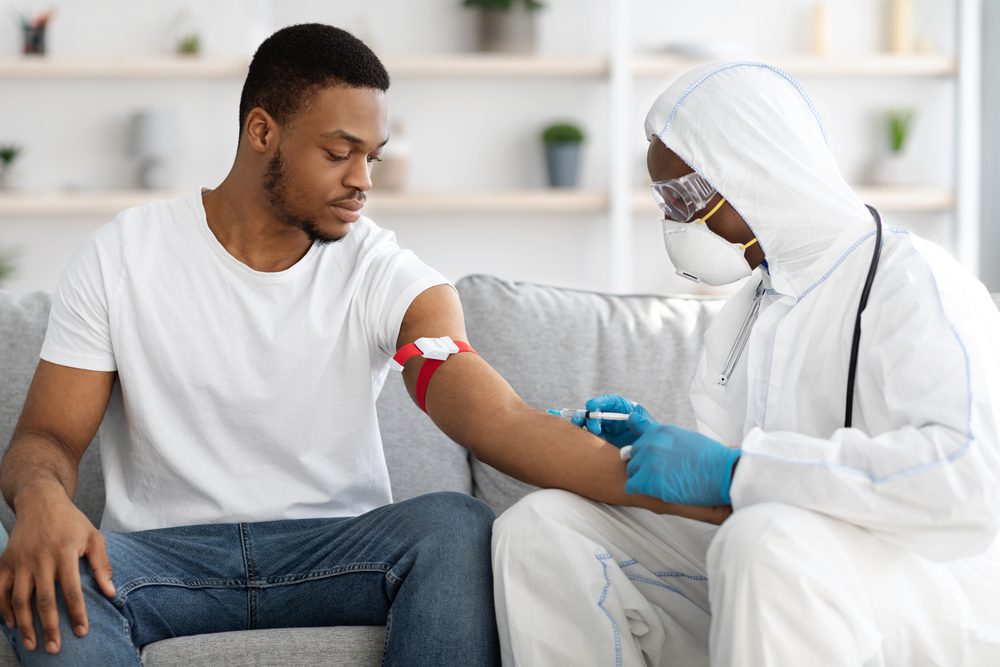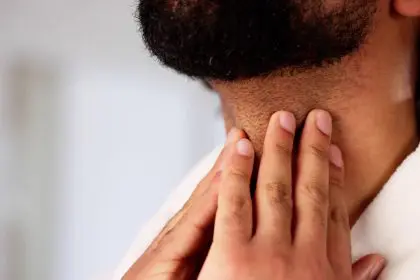The widespread muscle pain experienced by COVID-19 patients has become one of the most misunderstood aspects of the virus, affecting far more people than initially recognized. Medical observations show that muscle aches, known medically as myalgia, impact an staggering 86% of individuals who contract the virus, making it one of the most common symptoms across all age groups and severity levels.
What makes these muscle aches particularly challenging is their unpredictable nature and the multiple ways they can affect the body. Unlike typical muscle soreness from exercise or injury, COVID-related muscle pain often appears without warning and can persist long after other symptoms have resolved, leaving millions of people searching for answers and effective relief strategies.
The complexity of COVID muscle pain extends beyond simple discomfort, often signaling deeper physiological changes occurring within the body as it battles the virus. Understanding these mechanisms has become crucial for both patients and healthcare providers working to develop effective treatment approaches for this widespread symptom.
The body’s inflammatory response creates widespread discomfort
When the immune system encounters COVID-19, it launches an aggressive defense that inadvertently causes significant muscle discomfort throughout the body. This response involves the release of specialized proteins called cytokines, which serve as chemical messengers that coordinate the immune system’s attack against the virus.
The primary culprits behind COVID muscle pain include interleukin-6, interleukin-1, and tumor necrosis factor-alpha. These powerful inflammatory compounds flood the bloodstream as part of the body’s natural defense mechanism, but their presence creates a cascade of effects that result in widespread muscle and joint aches.
This inflammatory process doesn’t discriminate between different muscle groups, which explains why COVID patients often report simultaneous pain in multiple areas of their body. The systemic nature of this inflammation means that muscles that haven’t been used or strained can still experience significant discomfort, catching many patients off guard.
The intensity of this inflammatory response varies from person to person, with some experiencing mild muscle stiffness while others report debilitating pain that interferes with daily activities. Factors such as age, overall health status, and the body’s individual immune response all contribute to the severity and duration of muscle-related symptoms.
Direct viral attack on muscle tissue adds another layer of pain
Beyond the inflammatory response, medical observations have revealed that COVID-19 can directly target and damage muscle tissue itself. The virus has the ability to attach to muscle cells, causing cellular damage that contributes to the pain and weakness many patients experience during their illness.
This direct muscle invasion represents a significant departure from how other respiratory viruses typically affect the body. While most viral infections cause muscle aches primarily through inflammatory processes, COVID-19’s ability to directly damage muscle tissue helps explain why some patients experience more severe and longer-lasting muscle symptoms.
The combination of inflammatory damage and direct viral attack creates a dual mechanism of muscle pain that can be particularly challenging to treat. This explains why traditional pain management approaches that work well for other types of muscle discomfort may be less effective for COVID-related muscle pain.
The direct tissue damage also helps explain why muscle pain often appears as one of the earliest COVID symptoms, sometimes preceding the more recognized respiratory symptoms by several days. This early onset occurs because the virus can begin attacking muscle tissue before it significantly impacts the respiratory system.
Geographic patterns of pain reveal surprising insights
The distribution of COVID muscle pain throughout the body follows distinct patterns that differ from typical muscle strain or injury. Medical observations have identified that the legs, neck, and head represent the most commonly affected areas, with each region presenting unique challenges for patients.
Leg pain from COVID often manifests as deep, aching sensations that can make walking or standing for extended periods difficult. This lower extremity involvement can significantly impact mobility and daily functioning, particularly for patients who were previously active and healthy.
Neck pain associated with COVID frequently extends beyond simple muscle soreness to include stiffness and reduced range of motion that can persist for weeks after other symptoms resolve. This neck involvement often coincides with headaches, creating a cycle of discomfort that affects sleep quality and overall well-being.
Head and facial muscle pain represents another common manifestation that can be easily mistaken for tension headaches or sinus problems. This type of discomfort often involves the muscles around the temples, jaw, and forehead, sometimes making activities like chewing or speaking uncomfortable.
Joint pain, particularly in the wrists, ankles, shoulders, and knees, frequently accompanies muscle aches and can create additional functional limitations. Many patients also report significant lower back pain that can make sleeping and sitting for extended periods challenging.
Timeline reveals the unpredictable nature of muscle symptoms
The onset and duration of COVID muscle pain follow patterns that often surprise both patients and healthcare providers. Unlike many viral illnesses where muscle aches appear alongside fever and other systemic symptoms, COVID muscle pain frequently emerges as one of the very first signs of infection.
This early appearance of muscle pain, often preceding respiratory symptoms like cough and shortness of breath, has led many patients to initially dismiss their discomfort as unrelated to COVID. This early onset pattern has important implications for infection control, as individuals may be contagious while experiencing only muscle aches and no other obvious COVID symptoms.
For patients with mild COVID cases, muscle pain typically resolves within one to two weeks, following a gradual improvement pattern that parallels recovery from other symptoms. However, this timeframe can vary significantly based on individual factors and the overall severity of the infection.
Patients with more severe COVID cases, particularly those requiring hospitalization, often experience prolonged muscle pain that can persist for over four weeks. This extended duration reflects the more intense inflammatory response and potential for greater tissue damage in severe cases.
Long COVID creates lasting muscle pain challenges
The emergence of long COVID has revealed that muscle pain can persist for months or even years after the initial infection resolves. Conservative estimates suggest that at least 10% of COVID patients will develop long COVID, with muscle pain being one of the most common persistent symptoms.
In long COVID patients, muscle pain often takes on different characteristics than the acute phase pain. Many experience what medical professionals term ischemic myalgia, which results from inadequate blood flow to muscle tissues. This type of pain can be particularly challenging to treat because it involves ongoing circulation problems rather than just residual inflammation.
The chronic nature of long COVID muscle pain requires different management approaches than acute COVID muscle symptoms. Patients often need comprehensive rehabilitation programs that address both the physical symptoms and the functional limitations that develop over time.
The unpredictability of long COVID muscle pain adds another layer of complexity, with symptoms often fluctuating in intensity and location without apparent triggers. This variability can make it difficult for patients to plan activities and for healthcare providers to develop consistent treatment strategies.
Effective home management strategies provide relief
For patients experiencing mild to moderate COVID muscle pain, several home-based management strategies have proven effective in providing relief and supporting recovery. The key to successful home management lies in understanding which approaches work best at different stages of the illness.
The RICE method – Rest, Ice, Compression, and Elevation – provides a foundation for managing acute muscle pain during the first few days of symptoms. Applying ice to affected areas for the first three days helps reduce inflammation and numb pain, while compression garments can provide additional support for aching muscles.
After the initial three-day period, transitioning from ice to heat therapy often provides better relief as the acute inflammatory phase subsides. Heat helps improve blood flow to affected muscles and can reduce stiffness that develops during the recovery phase.
Over-the-counter pain medications play an important role in managing COVID muscle pain, with both acetaminophen and ibuprofen showing effectiveness. The choice between these medications often depends on individual tolerance and the presence of other symptoms or medical conditions.
Gentle stretching and massage can provide significant relief for muscle stiffness and pain, particularly as patients begin to recover. These techniques help maintain flexibility and prevent the development of compensatory movement patterns that can lead to additional pain.
Physical activity balance promotes healing
Finding the right balance of activity and rest represents one of the most challenging aspects of managing COVID muscle pain. While rest is important during the acute phase of illness, gentle movement often provides better outcomes than complete inactivity once patients begin to recover.
Light walking, when patients feel able, helps maintain muscle strength and flexibility while promoting circulation that supports healing. The key is starting slowly and gradually increasing activity levels based on individual tolerance and symptom response.
For patients with persistent muscle pain, working with physical therapy professionals can provide valuable guidance in developing safe and effective exercise programs. These specialists can design individualized approaches that address specific muscle pain patterns and functional limitations.
The timing of return to more vigorous physical activity requires careful consideration, particularly for patients who were previously active. Pushing too hard too soon can potentially worsen muscle pain and delay overall recovery.
Distinguishing COVID muscle pain from other causes
Given that muscle aches can result from numerous conditions unrelated to COVID-19, accurately identifying the cause of muscle pain has become increasingly important. Understanding the distinguishing features of COVID muscle pain can help patients and healthcare providers make appropriate treatment decisions.
COVID muscle pain typically appears alongside other viral symptoms such as fever, fatigue, or changes in taste and smell. The widespread, multi-site nature of COVID muscle pain also differs from more localized pain caused by muscle strain or injury.
The timing of symptom onset provides another important clue, with COVID muscle pain often appearing suddenly and progressing rapidly, unlike the gradual onset typically seen with conditions like fibromyalgia or chronic fatigue syndrome.
Testing remains the most reliable method for confirming COVID as the cause of muscle pain. Both clinical and home testing options provide valuable information for guiding appropriate treatment decisions and infection control measures.
Recovery outlook brings hope for most patients
Despite the challenging nature of COVID muscle pain, the long-term outlook for most patients remains positive. The majority of individuals experience complete resolution of muscle symptoms within several weeks of infection, particularly when appropriate management strategies are implemented early in the course of illness.
Even patients with more severe or prolonged muscle pain often see significant improvement over time with proper treatment and rehabilitation. The key to successful recovery often lies in patience and consistency with treatment approaches rather than expecting rapid resolution.
For patients with persistent symptoms, emerging treatment options and rehabilitation programs continue to show promise in providing relief and restoring function. The growing understanding of COVID muscle pain mechanisms is leading to more targeted and effective treatment approaches.
The experience of COVID muscle pain, while challenging, has also led many patients to develop better awareness of their body’s signals and more effective self-care strategies that benefit their overall health beyond their COVID recovery.















